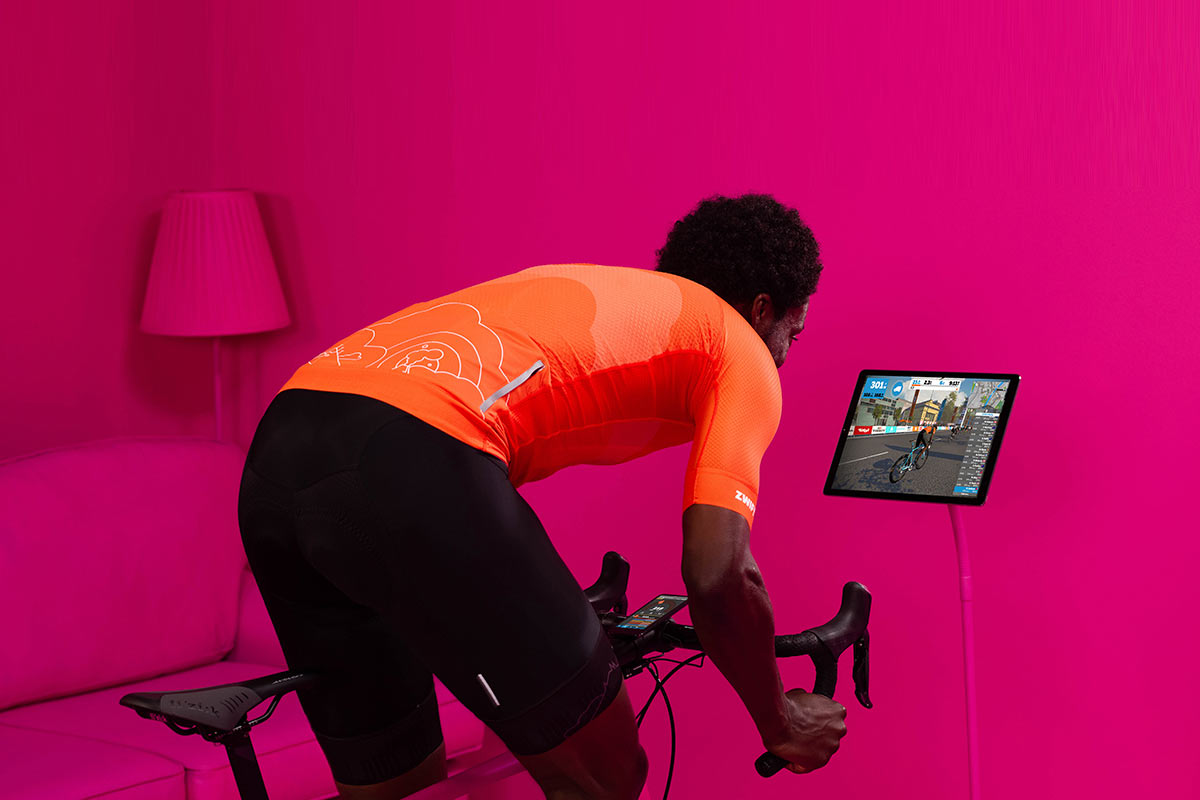Perhaps taking a cue from Peloton, indoor virtual world platform Zwift has just raised $450M in Series C funding. And they’re promising it’ll lead to increased gamification and the introduction of hardware to create a more complete ecosystem. Before we get into what this could mean, here’s their blurb:
“Zwift, the global online fitness platform for cyclists and runners, today announced a $450 million minority investment led by leading global investment firm KKR, accompanied by other new investors Permira, Specialized Bicycle Components’ venture capital fund, Zone 5 Ventures and the Amazon Alexa Fund and existing investors including True, Highland Europe, Novator and Causeway Media. The investment will be used to accelerate the development of Zwift’s core software platform and bring Zwift-designed hardware to market, making Zwift a more immersive and seamless experience for users.”
File away that Specialized and Amazon mention for a second. Further into the announcement, they say:
“With this investment, Zwift is primed to operate in a broader fitness market and deliver on our ambition to provide gamified fitness through integrated software and hardware, to anyone who wants to have fun while getting fit at home. We will be accelerating our investment in the core business, improving the overall product experience, and bringing forward new features, more content and Zwift designed hardware, all with the support of KKR and our new outside investors who can help drive our growth.”

What does it all mean?
Remember when we predicted that indoor training would become more of a real sport? It’s coming true. And we predicted the big bike brands would start paying attention to indoor equipment. Specialized trainer bike, anyone? That makes a whole lot more sense, now.
As an investor, Specialized is in a good position to use their Body Geometry fit data, saddles, bars and accessories to outfit a fully adjustable indoor training bike. Then optimize it for Zwift, with controls and buttons located directly on the brake hoods.
Having their own equipment lets Zwift more easily expand outside of the “enthusiast” category and into the realm of general fitness (like Peloton). We could see other Zwift worlds being created specifically for social group rides, or celebrity-led training classes. Those users aren’t going to piece together smart trainers and screens and everything else, they just want to buy a single piece of equipment, turn it on, and get started.
And Amazon? Hey Alexa, launch Zwift and load today’s training plan. Hey Alexa, message Amy on Zwift and tell her I’ll join the ride at 4pm.
Why else would other brands get involved?
We could see Specialized being interested in in-game bike placements, for sure. And Amazon could recommend nutrition and recovery products, or offer a discounted or free Zwift subscription to Prime members. They already work with Twitch to provide free DLC for Playstation and XBOX gamers, so that’s not a stretch.
But, as with most services and apps these days, the real value is in recurring subscription revenue… and the data. There’s no doubt Zwift is capturing a ton of user data every time you log in, and that data can be used to by partner brands to market to you.
What could go wrong? What are we looking forward to?
Of course, there’s the risk that Zwift starts creating features that are too optimized for (or even exclusive to) their own equipment.
That could end up hurting them more than helping. Such things would alienate a lot of their current 3rd party equipment partners, not to mention piss off a lot of Zwift members. (Want proof? Look at the backlash SquareEnix got for making a Spiderman character exclusive to Playstation owners, despite the Marvel Avengers game being available on XBOX, etc.).
Except… their announcement says they’re focused on gamification of the indoor cycling (and running) experience. The logical progression of that is in-game actions and play that would benefit from physical controls. Sure, they could make an add-on, bar-mounted controller, but a completely custom handlebar or indoor bike would provide a better experience.
And a fully custom indoor bike would allow them to improve upon features like steering, tactile response to varied terrain, natural motion. All of these things currently require more and more third-party pieces of equipment to make happen.
What we’d really like to see is the use of Virtual Reality headsets, and $450M should give them the capital to make something lightweight and breathable enough.
And e-sports, of course.
They’re also very interested in e-sports, having hosted the first-ever virtual Tour de France while we waited for the real thing to start. With enough users (they already have 2.5 million accounts), they could push cycling e-sports into a more mainstream thing.
Can you imagine collegiate cyclists blurring the line between real athlete and e-athlete? Because Rutgers is setting the stage for such things. Until then, you can create your own virtual riding environment at home.
